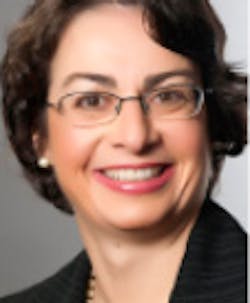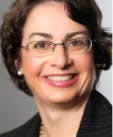Is forensics a good fit for you?
Ann-Marie C. DePalma, MEd, RDH, CDA, FADIA, FAADH
Although glamorized on TV and in movies, the real work of crime scene investigators (CSIs) is to identify, collect, preserve, and package evidence at crime scenes. Their world is often fraught with challenging events. Members of the CSI team beyond law enforcement officials include photographers, artists, technicians, fingerprint and DNA experts, and forensic scientists.
As part of the forensic scientific team, dental hygienists can play a role in solving cases and assisting in closure for victims’ families. But what exactly is forensic science, and how do hygienists play a role? I’ll review forensics and share one hygienist’s experiences in the forensic science field.
Many people believe that forensics means death, but the actual definition is “Relating to or dealing with the application of scientific knowledge to legal problems” (adjective), and “An argumentative exercise” (noun).1 Forensic accountants use their skills to investigate fraud or embezzlement and to analyze financial information for use in legal proceedings. Computer forensic teams collect, analyze, and report on digital data for use in a legally admissible manner in civil and criminal cases.
Forensic scientists collect, preserve, and analyze scientific evidence found during the investigation by CSIs and law enforcement officials. Some forensic scientists go to the crime scene to collect and review evidence, while others stay in the lab to analyze items. Forensic dentistry teams are part of the science team and apply dentistry to the law. Forensic dentistry can involve both living and deceased individuals.
One hygienist’s story in forensics
Amber Riley, MS, RDH, is a member of the forensic dentistry team in San Diego, California. She has been involved with forensic dentistry for 20 years and has experience with criminal and civil cases and disaster fatality management. The most challenging cases for her involve fatalities due to fire since identification of victims is difficult due to the fragility of the remains, and civil cases are often challenging due to the “omission factor.” Dentists, hygienists, and assistants can be sued, investigated, and disciplined by their state boards for acts that they do not do, as well as for the acts that they do perform.
To maintain the scientific method and professionalism, forensic team members need to separate themselves from emotions and focus on the work, and Amber has found that she often has to insulate herself from the many emotions that cases evoke. This is not meant to be disrespectful to a decedent, but rather to remain objective and observant to the mission of the forensic team. Dental professionals need to help provide solid scientific research to objectively prove the positive identifications of individuals or the positive exclusions of identities.
Amber shared the cold case of a missing teenage female that she worked on. She and other members of the team were asked to prove the identity of skeletal remains found in a soggy riverbed. The teenager had been missing for three years when the remains were found, and it was suspected that the remains were hers. Amber and a forensic team partner had the missing person’s report, the missing person’s last known radiographic exam and treatment record from her dentist, and bones that included a skull, maxilla, and mandible.
The forensic pathologist and forensic anthropologist examined the remains and concluded that they were consistent with an individual younger than 20, older than 12, and female. Amber and her partner examined the remains, took photographs, took an FMX, and completed a full odontogram charting. Examining the antemortem (before death) radiographs and the remains led Amber to believe that the body was not the missing person. She discussed her findings with the supervising chief odontologist, Rick Cardoza, DDS. (An odontologist studies the structure and diseases of teeth with specialized knowledge in identification of persons and crimes.)
Dr. Cardoza and Amber reviewed the data and determined the key clue was an impacted maxillary left canine. According to the available records, the missing girl had 28 erupted permanent teeth. The skeleton had an impacted No. 11 just barely peeking through the hard palate. With this one discrepancy alone, there was no way that the body could have been that of the missing teenager.
To support their conclusion, the forensic dental team calculated the estimated age of the remains using the second and third molars and found that the victim was younger than the missing person. To this day, Amber doesn’t know who the person was whose remains they examined, or if the missing teenage girl was ever found, dead or alive.
Amber feels humbled to work with an incredible team of pathologists, law enforcement officials, investigators, and dental professionals in the US and abroad who are dedicated to forensics. These people work on a variety of projects that involve research and humanitarian contributions to forensic odontology that are focused on global migration, war crimes, and national missing and unidentified person cold cases. The work the teams do matters to the families of loved ones missing or lost and helps families reach closure in their loved ones’ deaths. Despite the challenging circumstances, Amber and other forensic dental professionals enjoy the work.
She continues to work clinically four days a week, and her morgue work has led her to be extremely strict in her recordkeeping, radiographic techniques, and chart maintenance of her patients since she knows firsthand the importance of accurate and up-to-date information.
A good fit for you?
Hygienists are a natural fit for a forensic team. Their knowledge of human tooth anatomy, cranial anatomy, and restorative and disease processes, and their critical thinking skills are essential. Forensic dental teams are led by forensic dentists, and depending on the accreditation of the medical examiner or coroner’s department, the dentist may also be a board-certified forensic odontologist.
Similar to clinical hygiene practice in most states, hygienists working in forensics are under the supervision of the chief odontologist. All members of the dental team are under the comprehensive supervision of the chief medical examiner of the jurisdiction. One difficulty with forensics work is that the schedule is not 9 to 5. Team members are asked to work nights, weekends, or holidays, and often Amber leaves her clinical position after a full day and heads to the morgue for more hours.
Amber explains that real-life forensic cases are different than the cases portrayed on the screen. Yes, they use a portable x-ray unit such as Nomad, but it does not shoot out a blue light from the cone as some scripts show. DNA results are not returned in 20 minutes or even 20 days, fingerprints are not routinely lifted off bed sheets, and there is not a repository of bite mark images for pattern injury comparison. However, these exciting story lines do inspire young people to investigate physical and forensic sciences, and they might become the forensic scientists of tomorrow.
In court cases involving forensic science, juries often have a false impression of the science and expect the “wow” factor to convince them of someone’s innocence or guilt. This phenomenon is called the “CSI effect,” which is the belief that jurors demand more forensic evidence in criminal trials, raising the standard of proof for prosecutors based on the public’s perception of forensic science. Yet, human dental identification is rarely challenged in court by defense counselors, and Amber has not been challenged in any cases where her opinion was needed. She has given sworn testimony as a subject matter expert on behalf of a state dental board investigation, as well as on behalf of a defendant when the investigation fell into an area of practice where Amber qualified as an expert.
Amber generally has no direct interaction with the family members of victims because it is not a good idea to ask members of forensic teams to interact directly with family members. In large-scale disasters, specific qualified specialists work as intercessors between family members and forensic team members. These specialists include nurses, funeral directors, and death investigators and are known as family assistance teams. However, if the dentist of the decedent needs to be contacted, Amber can make the request and supply the necessary official documentation for the record release within HIPAA guidelines.
Dental professionals who want to become involved in forensic dentistry need to understand that it is not a career alternative, but a volunteer or low-paid position. The work is not needed every day, but on an as-needed basis. Dental professionals working in forensics are clinicians first, in dentistry, dental hygiene, or education, and their work on the forensic team serves as an adjunct to their other positions.
Dental professionals are encouraged to become involved in forensics, and a good way to start is to attend forensic courses at the local forensic dental society. Amber got her start by joining the American Society of Forensic Odontology.
With fewer than 100 board-certified forensic odontologists in the world and a few hundred dentists and auxiliaries who are active in forensics, the odontology circle is small. However, whether in an antemortem or postmortem capacity, hygienists have the unique skills to contribute in the real-life CSI world in the service of others.
Reference
1. Forensic. Merriam-Webster dictionary. https://www.merriam-webster.com/dictionary/forensics?utm_campaign=sd&utm_medium=serp&utm_source=jsonld.
Authors’ note:For more information about Amber’s experiences in forensics, contact [email protected]. For more information about forensics, visit the American Society of Forensic Odontology at afso.org.
Ann-Marie C. Depalma, MED, RDH, CDA, FADIA, FAADH, is the 2017 recipient of the Esther M. Wilkins Distinguished Alumni Award of the Forsyth School for Dental Hygiene/Massachusetts College of Pharmacy. She is a fellow of the American Academy of Dental Hygiene and the Association of Dental Implant Auxiliaries, as well as a continuous member of ADHA. She can be reached at [email protected].

